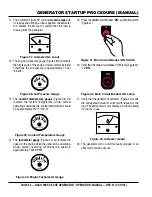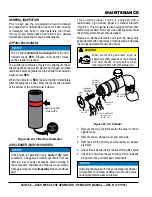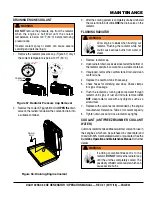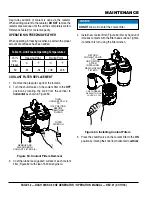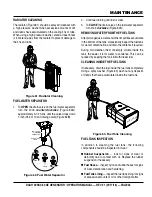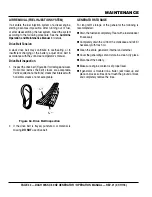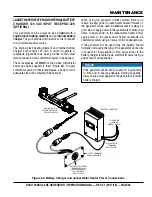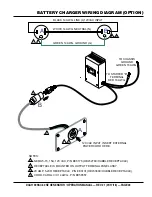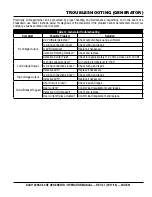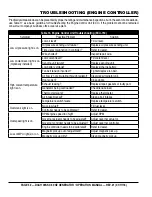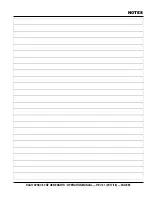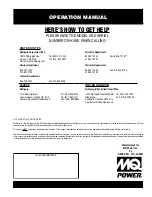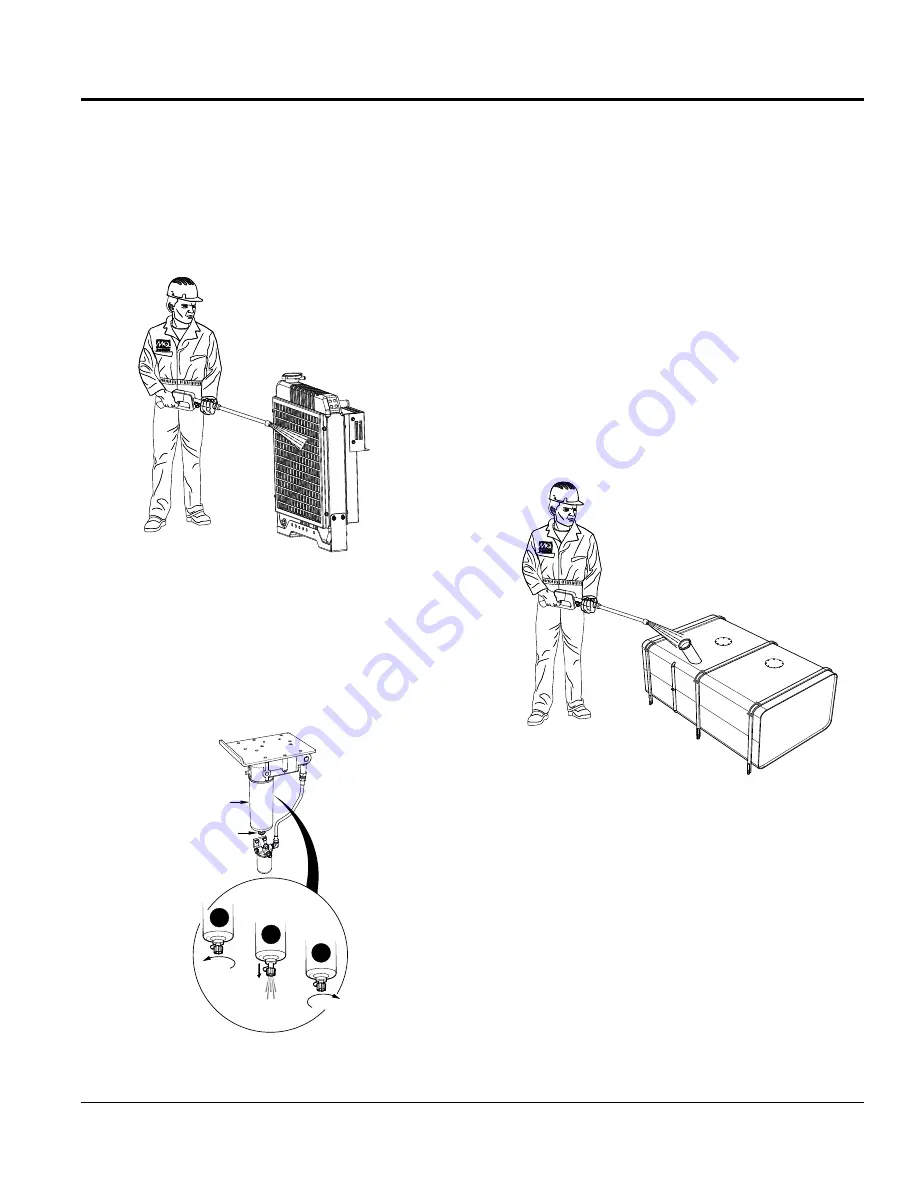
DCA1100SSC 60 HZ GENERATOR • OPERATION MANUAL — REV. #1 (01/17/18) — PAGE 43
RADIATOR CLEANING
The radiator (Figure 61) should be sprayed (cleaned) with
a high pressure washer when excessive amounts of dirt
and debris have accumulated on the cooling fins or tube.
When using a high pressure washer, stand at least 5 feet
(1.5 meters) away from the radiator to prevent damage to
the fins and tube.
Figure 61. Radiator Cleaning
FUEL WATER SEPARATOR
1. To
OPEN the drain valve on the fuel water separator
turn the knob
counterclockwise
(Figure 62
A)
approximately 3-1/2 turns until the valve drops down
1-inch (25.4 mm) and draing occurs(Figure 62
B).
Figure 62. Fuel Water Separator
FUEL FILTER/
WATER
SEPARATOR
OPEN
DRAIN
CLOSE
A
B
C
OPEN/CLOSE
KNOB
2. Continue draining until fuel is clear.
3. To
CLOSE the drain valve on the fuel water separator
turn knob
clockwise
(Figure 62
C).
REMOVING WATER FROM THE FUEL TANK
After prolonged use, water and other impurities accumulate
in the bottom of the tank. Occasionally inspect the fuel tank
for water contamination and drain the contents if required.
During cold weather, the more empty volume inside the
tank, the easier it is for water to condense. This can be
reduced by keeping the tank full with diesel fuel.
CLEANING INSIDE THE FUEL TANK
If necessary, drain the fuel inside the fuel tank completely.
Using a spray washer (Figure 63) wash out any deposits
or debris that have accumulated inside the fuel tank.
Figure 63. Fuel Tank Cleaning
FUEL TANK INSPECTION
In addition to cleaning the fuel tank, the following
components should be inspected for wear:
Rubber Suspension — look for signs of wear or
deformity due to contact with oil. Replace the rubber
suspension if necessary.
Fuel Hoses — inspect nylon and rubber hoses for signs
of wear, deterioration and hardening.
Fuel Tank Lining — inspect the fuel tank lining for signs
of excessive amounts of oil or other foreign matter.
FUEL
TANK
MAINTENANCE






